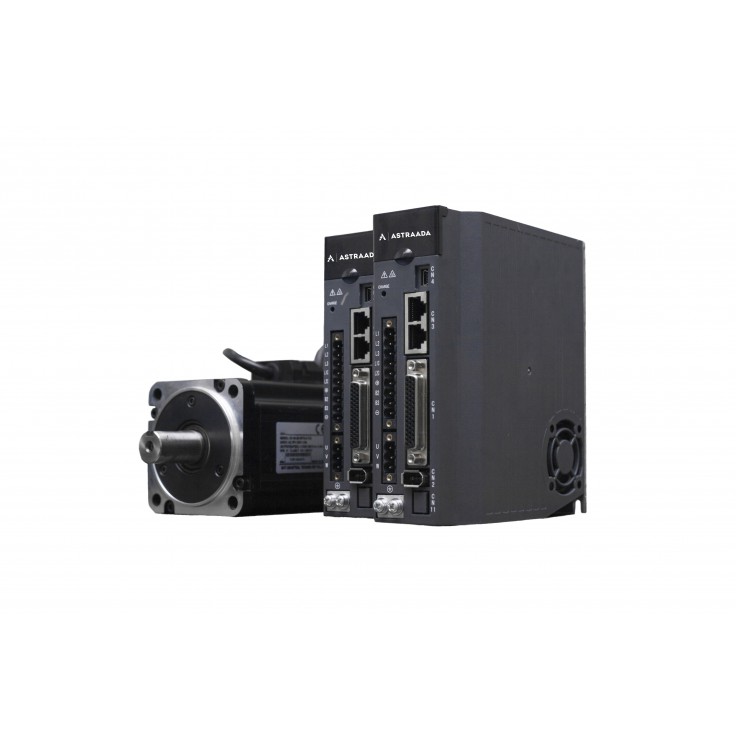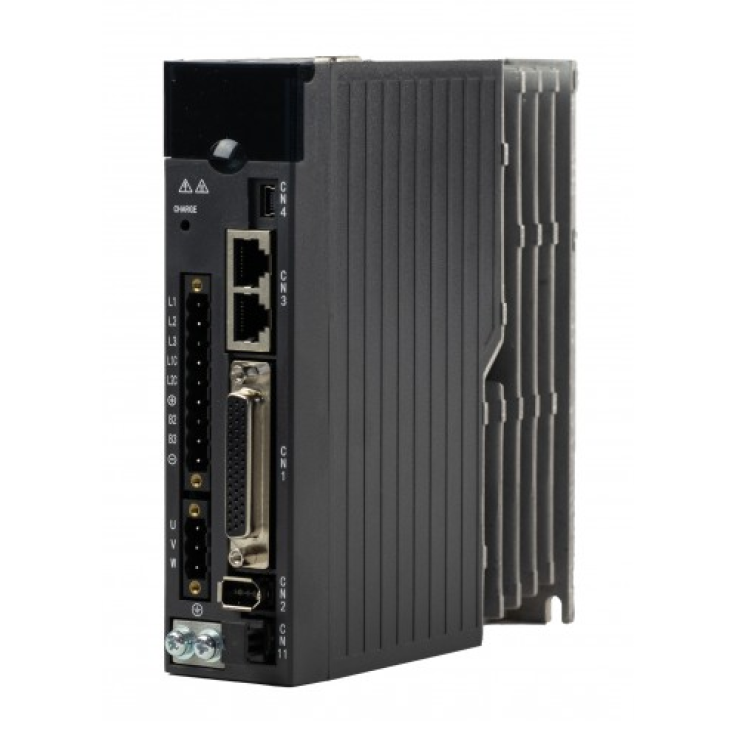Product description
Model specification Model: AS64SRV20C4-E
- Rated power: 0.4 kW
- Supply voltage: 230 V
- Control: EtherCAT
- Rated current: 1.8 A
The servo amplifier is the master control device of the servo system. The motor control signals are sent via it. It is the servo amplifier that analyses any external impulses, adjusting the movement of the motor. The programming of the servo amplifiers is done in the same way as with inverters - you have to define the relevant values in special parameters segmented into groups. With the Astraada SRV-64 servo inverters, programming and parameter configuration is very simple. In the freeware Astraada DRIVE Studio, the parameters are presented in the form of an intuitive table with full descriptions of the individual values. This eliminates the need to use an external parameter list in the documentation. Communication with the software takes place via USB cable on a plug-and-play basis, without unnecessary link configurations.
Astraada's new SRV-64 servo series
The SRV-64 is a new series of servo drives from the Astraada brand. The new drives represent a clear step forward in the development of the series. The key differentiators of the Astraada SRV-64 compared to the previous series are: Increased accuracy Control with increased accuracy. The new 23-bit bit encoder enables positioning to be achieved at 0.15 angular seconds.
- Faster response time
- Achieve minimal control system inertia. The SRV-64 responds to control commands at 3kHz.
- 45% smaller size
Save space in the control cabinet. The new servo series is approximately 45% smaller than the previous SRV-63 series.
- Servo amplifier design
- Servo amplifier
- Functions
- EhterCAT communication
Astraada SRV-64 servo amplifiers in E version are equipped with the modern EtherCAT protocol. This protocol is easy to use and configure - all you need is a source file for the software with information about the device being connected to the network. It allows you to access device parameters without addressing them - all in the form of an accessible table with descriptions. EtherCAT provides a plug-and-play connection so that the servo amplifier can be disconnected from the network even during operation. When reconnected, the protocol will establish the connection itself, even if the servo amplifier has been plugged in elsewhere in the network.
Hardware features
EtherCAT communication
Astraada SRV-64 servo amplifiers in E version are equipped with the modern EtherCAT protocol. This protocol is easy to use and configure - all you need is a source file for the software with information about the device being connected to the network. It allows you to access device parameters without addressing them - all in the form of an accessible table with descriptions. EtherCAT provides a plug-and-play connection so that the servo amplifier can be disconnected from the network even during operation. When reconnected, the protocol will establish the connection itself, even if the servo amplifier has been plugged in elsewhere in the network.
Connecting an external encoder
Some installations require the use of an additional encoder. Astraada SRV-64 servo amplifiers in the standard version can support such an external encoder. The device will treat the additional sensor as a master and adapt to its readings in follower mode. You can define the rotation ratio of the external encoder to that of the one built into the motor.
Pulse-Direct control
In addition to the classic communication protocol, the standard version of the Astraada SRV-64 servo amplifier also supports simple pulse-direct control (pol. step-direction control). The servo amplifier in this mode is controlled on the basis of pulse signals going to the specially programmed high-frequency inputs of the servo amplifier.

Write Your Own Review
Do you need help? Contact us. We will be happy to answer all Your questions.
Do you have any questions?




